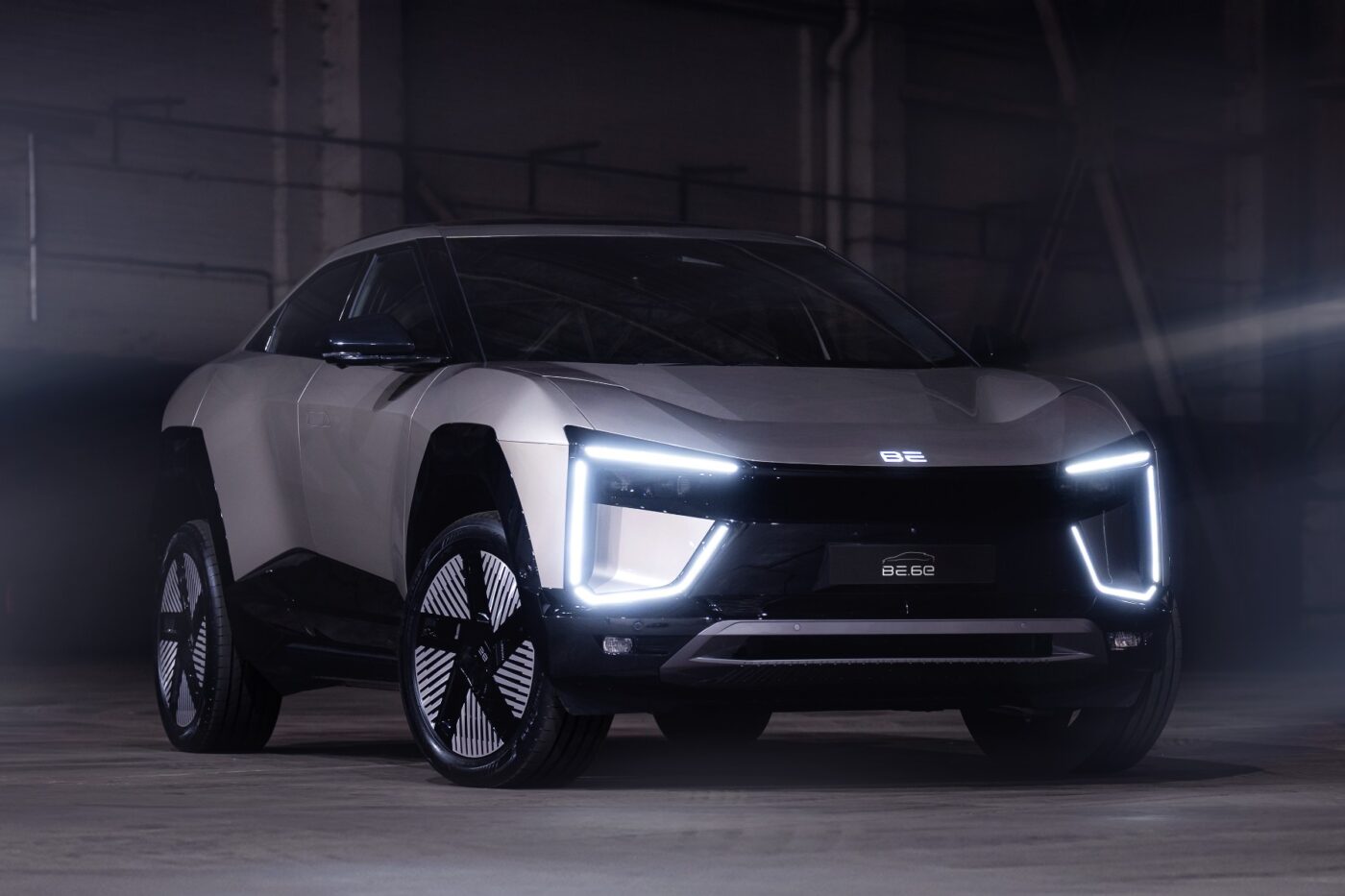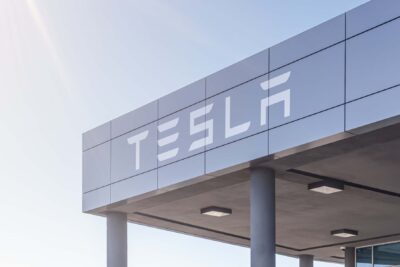Mahindra launches BE 6e and XEV 9e bespoke EVs in India
Mahindra developed the BE 6e and XEV 9e on the ‘INGLO’ dedicated EV platform, which it claims features one of the industry’s lightest flat-floor structures. The company engineered this platform for rear-wheel and all-wheel drive applications, but it offers only the BE 6e and XEV 9e in the former. It equips these EVs with a MacPherson strut suspension at the front and a five-link independent suspension with semi-active dampers at the back. The latter reacts in just 15 milliseconds, delivering a ride quality that feels exceptionally smooth and composed.
Dimensions
The BE 6e measures 4.4 m in length, 1.9 m in width, and 1.6 m in height and has an impressive 2.8 m wheelbase. Indian customers love Mahindra SUVs for their confident stance, and the BE 6e doesn’t disappoint, with a high ground clearance of 21 cm and massive 20-inch wheels – the largest in the segment. The sub-compact SUV coupe offers 455 litres of boot space (up to the backrest as per VDA – ISO V 211), and it has a frunk, giving 45 litres of additional volume.
At 4.8 m long, 1.9 m wide, and 1.7 m tall, the XEV 9e is a mid-size SUV coupe. However, it has the same wheelbase as the BE 6e – 2.8 m. The same goes for the ground clearance of 21 cm. The longer body gives it a much higher boot capacity of 663 litres (up to the backrest as per VDA – ISO V 211), though, and similarly, its frunk is also much bigger, with a volume of 150 litres.
Strangely enough, even though the XEV 9e is seven cm taller than the BE 6e, it offers only three millimetres more headroom. What’s even more perplexing is that its legroom is comparatively worse. Lastly, the bigger model loses even at the ground clearance at the battery level. These peculiarities suggest that the space packaging in the XEV 9e is not as good as in the smaller BE 6e, odd as it may sound. Local reports say the XEV 9e is a heavily modified version of the XUV700 ICE SUV, casting doubt on Mahindra’s claim that it is a “Born Electric” model.
| BE 6e | XEV 9e | |
|---|---|---|
| L x W x H | 4,371 mm x 1,907 mm x 1,627 mm | 4,789 mm x 1,907 mm x 1,694 mm |
| Wheelbase | 2,775 mm | 2,775 mm |
| Ground Clearance | 207 mm (222 mm at battery) | 207 mm (218 mm at battery) |
| Front Cabin Space | 1,522 litres | 1,617 litres |
| Headroom | 1,003 mm | 1,006 mm |
| Legroom | 1,064 mm | 1,055 mm |
| Shoulder Room | 1,436 mm | 1,522 mm |
| Boot Volume* | 455 litres | 663 litres |
| Frunk Volume | 45 litres | 150 litres |
Performance & Range
Mahindra offers the BE 6e and XEV 9e in two power-electric variants, which we can classify as ‘Standard Range’ and ‘Extended Range’ for the sake of simplicity. The company employs a lower-power motor generating 170 kW and 380 Nm of torque in the former and a higher-output motor developing 210 kW and 380 of torque in the latter.
The BE 6e hits 0 to 100 kph as quickly as 6.7 seconds, and the XEV 9e takes just 0.1 seconds more—6.8 seconds—for the same. Mahindra says the new EVs are not only quick but also agile and fun to drive. The company states a best-in-class manoeuvrability turning circle diameter of ten metres for both models, highlighting their practicality for India’s narrow city streets. It also claims best-in-class NVH, targeting some of its most discerning customers who prioritise comfort and quality above all.


















As for the battery pack, Mahindra uses BYD Blade LFP units featuring cell-to-pack technology to power the motors, with an energy storage capacity of 59 kWh in the Standard Range variant and 79 kWh in the Extended Range variant. The 59 kWh battery pack takes at least six hours for a 0-100% charging session at an AC charger, while the 79 kWh battery pack takes eight hours. Both units have the same 20-80% DC fast-charging time, of 20 minutes.
According to the Modified Indian Driving Cycles (MIDC), the BE 6e goes 535 kilometres (59 kWh)/682 kilometres (79 kWh) on a full charge and the XEV 9e 542 kilometres (59 kWh)/656 kilometres (79 kWh). According to WLTP, Mahindra expects the BE 6e and XEV 9e to deliver a range of 550 kilometres (79 kWh) and up to 533 kilometres (79 kWh), respectively.
Mahindra is so confident about the reliability and longevity of the BYD Blade battery packs that they offer a lifetime warranty, although only to private customers. In case of an ownership change, it limits the scope of coverage to ten years or 200,000 kilometres, whichever is earlier. The company tested these battery packs in the lab for 14,577 hours and in prototypes for more than 5.5 million kilometres in India. They withstood a 20-tonne (double the regulation) crush test, a 30-minute immersion test, and a three-minute fire test in 800-900ºC flame temperature.
The technical data that Mahindra has published for the premiere of its two models is very interesting in view of the history of the INGLO platform. It has been planned since 2022 as a cooperation with the VW Group, including the acquisition of MEB components. There were later delays, but the deal was finalised in February 2024. In terms of wheelbase, both the BE 6e and the XEV 9e correspond quite closely to a VW ID.4.
The big but: during the two-hour presentation, Mahindra avoided any references to VW and the MEB. There were rumours as early as 2023 that Mahindra would not source components from the German car manufacturer from 2026 or 2027. Instead, it struck a deal with Valeo for the drives. With power levels of 170 and 210 kW, the Valeo engine is also similar to the VW APP310 and APP550 drives – but none of the VW engines reach the 380 Nm torque. What is even more remarkable is that Mahindra has also achieved exactly the same energy content of 59 and 79 kWh with the LFP cells from BYD that current VW models with NMC batteries offer – with the same wheelbase.
| BE 6e Standard Range | BE 6e Extended Range | XEV 9e Standard Range | XEV 9e Extended Range | |
|---|---|---|---|---|
| Drive | RWD | RWD | RWD | RWD |
| Battery | 59 kWh | 79 kWh | 59 kWh | 79 kWh |
| Output | 170 kW | 210 kW | 170 kW | 210 kW |
| Torque | 380 Nm | 380 Nm | 380 Nm | 380 Nm |
| Acceleration | tba | 6.7 seconds | tba | 6.8 seconds |
| Range (WLTP) | tba | 550 km | tba | 533 |
| DC charging | 140 kW | 175 kW | 140 kW | 175 kW |
| Charging time DC | 20 min | 20 min | 20 min | 20 min |
Features
Right from the base trim, Mahindra equips the BE 6e and XEV 9e with plenty of attractive standard features. The smaller model flaunts bi-LED headlamps with daytime running lights, an illuminated brand logo (front), 18-inch wheels with aero covers, and dual 12.3-inch cockpit displays. It also features 65-watt USB Type-C fast-charging ports (front and rear), rear AC vents, connected car functions like cabin pre-cooling and scheduled charging, and a 6-speaker sound system.
In the XEV 9e, Mahindra offers 19-inch wheels with aero covers and three 12.3-inch dashboard displays, including an additional touchscreen that allows the front passenger to watch movies, play games, and make video calls. Additionally, Mahindra upgrades the rear seat to a more comfortable one with a multi-step recline for more comfort.
In the higher equipment lines of the BE 6e and XEV 9e, Mahindra bundles additional and more advanced features, such as a 1,400-watt, 16 Speaker Harman Kardon sound system with Dolby Atmos, AR-HUD, a massive glass roof with programmable LED ambient lighting (16 million colour options), and automatic perpendicular, angular & parallel parking along with a remote-controlled option. The company plans to reveal their complete details at a later stage. It does not mention the availability of any bidirectional charging function for either of the two EVs.
On the safety front, Mahindra gives basic equipment like six airbags, all-wheel disc brakes, driver drowsiness detection, tyre pressure monitoring system, rear parking sensors, and an HD rear camera in all the configurations of both BE 6e and XEV 9e. The company does offer a driver’s knee airbag, a 360-degree camera system, and Level 2+ advanced driver assistance systems in higher trims for enhanced safety.
Pricing
With base prices of 1.89 million Indian rupees (approximately 21,000 euros) and 2.19 million Indian rupees (approximately 25,000 euros), respectively, the BE 6e and XEV 9e, are quite expensive for the average Indian car buyer. However, both models pack a tonne of high-end technologies and promise superb performance, impressive range, and great comfort for their price, which makes them a great value for money. Mahindra is pitching them as premium, lifestyle EVs and should find sufficient customers for success in the domestic market. The company expects to begin delivering the BE 6e and XEV 9e between the end of February 2025 and early March 2025.




0 Comments